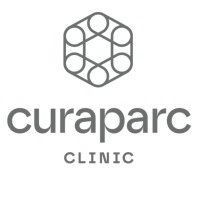The Science Behind Short-Stem Total Hip Arthroplasty: Why It's a Game Changer
Science behind short-stem total hip arthroplasty

Total hip arthroplasty (THA), commonly known as hip replacement surgery, has been a transformative procedure for patients suffering from severe hip pain and mobility issues. Among the various advancements in this field, short-stem total hip arthroplasty stands out as a significant innovation. This blog delves into the science behind short-stem total hip arthroplasty and explores why it is considered a game changer in the field of orthopedics.
Understanding Short-Stem Total Hip Arthroplasty
What Are Short-Stem Implants?
Short-stem implants are a type of prosthesis used in hip replacement surgeries. Unlike traditional long-stem implants, which extend deep into the femoral canal, short-stem implants are designed to fit into the upper part of the femur, preserving more of the patient's natural bone. This approach has several benefits, including less invasive surgery, faster recovery times, and better outcomes for patients.
The Anatomy of Short-Stem Implants
Short-stem implants are crafted from advanced biocompatible materials such as titanium alloys and ceramics. These materials are chosen for their durability, strength, and ability to integrate well with human bone. The design of short-stem implants typically includes:
- Anatomical Shape: To match the natural contours of the femur.
- Surface Coating: To promote bone growth and secure the implant in place.
- Optimized Load Distribution: To mimic the natural load-bearing characteristics of the femur.
The Science Behind Short-Stem Implants
Biomechanical Advantages
The biomechanical design of short-stem implants offers several advantages over traditional long-stem implants. By preserving more of the patient’s natural bone, short-stem implants allow for better load distribution and stability. This is crucial for maintaining the integrity of the femur and reducing the risk of complications such as thigh pain and implant loosening.
Bone Preservation
One of the key benefits of short-stem total hip arthroplasty is bone preservation. Traditional long-stem implants require the removal of a significant portion of the femur, which can weaken the bone and complicate future revision surgeries. Short-stem implants, on the other hand, preserve more bone, making them an ideal choice for younger patients who may need revision surgery later in life.
Biological Fixation
Short-stem implants often rely on biological fixation, where the patient’s bone grows into the surface of the implant, securing it in place. This is achieved through surface coatings that encourage bone growth, such as hydroxyapatite or porous titanium. Biological fixation offers a stable and long-lasting bond between the implant and the bone, reducing the risk of implant loosening.
Clinical Benefits of Short-Stem Total Hip Arthroplasty
Reduced Surgical Trauma
Short-stem total hip arthroplasty is typically less invasive than traditional hip replacement surgery. The smaller size of the implant allows for a less extensive surgical procedure, which means:
- Smaller Incisions: Less damage to muscles and soft tissues.
- Reduced Blood Loss: Lower risk of complications during surgery.
- Shorter Surgery Time: Reduced time under anesthesia for the patient.
Faster Recovery and Rehabilitation
Patients undergoing short-stem total hip arthroplasty often experience faster recovery times. The minimally invasive nature of the procedure, combined with reduced surgical trauma, allows patients to begin rehabilitation sooner. This can lead to:
- Quicker Return to Mobility: Patients can start walking and performing daily activities sooner.
- Reduced Pain and Discomfort: Less postoperative pain due to smaller incisions and less muscle damage.
- Shorter Hospital Stays: Many patients can go home sooner, reducing the overall cost of care.
Improved Long-Term Outcomes
The design and materials of short-stem implants contribute to improved long-term outcomes for patients. Studies have shown that patients with short-stem implants experience:
- Higher Satisfaction Rates: Due to reduced pain and improved mobility.
- Lower Revision Rates: Thanks to better implant stability and bone preservation.
- Enhanced Quality of Life: With the ability to return to normal activities and maintain an active lifestyle.
Technological Innovations
The future of short-stem total hip arthroplasty looks promising, with ongoing technological innovations aimed at further improving the procedure. These include:
- Advanced Imaging Techniques: To enhance preoperative planning and ensure precise implant placement.
- Robotic-Assisted Surgery: For increased accuracy and consistency in implant positioning.
- Smart Implants: Equipped with sensors to monitor implant performance and detect potential issues early.
Personalized Medicine
Personalized medicine is also expected to play a significant role in the future of short-stem total hip arthroplasty. This approach involves:
- Custom Implants: Using 3D printing and other technologies to create implants tailored to the patient’s specific anatomy.
- Precision Surgery: Utilizing advanced imaging and robotic-assisted techniques to ensure the highest level of precision during surgery.
Conclusion
Short-stem total hip arthroplasty represents a significant advancement in the field of orthopedic surgery. By preserving more of the patient’s natural bone, reducing surgical trauma, and promoting faster recovery times, short-stem implants offer numerous benefits over traditional long-stem implants. The science behind these innovations is continually evolving, promising even better outcomes for patients in the future.
As research and technology continue to advance, short-stem total hip arthroplasty is poised to become the standard of care for hip replacement surgeries. Patients considering hip replacement should consult with their healthcare providers to determine if short-stem implants are the right choice for their specific needs and circumstances. With the right approach, short-stem total hip arthroplasty can lead to significant improvements in pain relief, mobility, and overall quality of life.
TERMIN VEREINBAREN?
Gerne können Sie einen Termin sowohl telefonisch, als auch online vereinbaren.



























